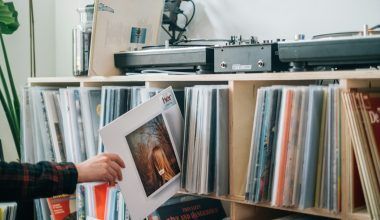When you think about streaming music, Spotify is probably one of the first platforms that comes to mind. It’s easy to use, it has millions of songs, and for many people, it’s their go-to for all things music. But have you ever stopped to wonder how much money artists actually make per stream on Spotify? If so, you’re not alone. This question pops up a lot, especially for music lovers and budding artists alike. Let’s explore what goes on behind the scenes.
The Basics of Spotify’s Payment Model
First, let’s understand how Spotify works. Unlike traditional music sales where artists earn money from each album or song sold, Spotify operates on a streaming model. When you play a song on Spotify, the artist gets paid for that stream. Sounds simple, right? Well, not quite. The reality is a bit more complicated.
Spotify doesn’t pay artists a fixed amount per stream. Instead, the payment depends on several factors. These include the total revenue Spotify earns, the artist’s share of streams in a given period, and the agreements between Spotify and music distributors or record labels. On average, though, Spotify pays artists somewhere between $0.003 and $0.005 per stream. That means it can take thousands of streams to make even a modest amount of money.
Why Doesn’t Spotify Pay a Flat Rate Per Stream?
The reason Spotify doesn’t pay a flat rate per stream boils down to its business model. Spotify collects revenue through two main sources: premium subscriptions and advertising. A portion of that revenue is set aside to pay artists, but the amount isn’t evenly distributed. Instead, Spotify uses a pro-rata model.
Here’s how it works: Spotify pools all the revenue it earns in a given month. Then, it calculates what percentage of total streams belongs to each artist. For example, if your songs make up 1% of all streams on Spotify for the month, you’ll get 1% of the revenue allocated for artists. While this might sound fair, it often means smaller artists earn very little because they’re competing with global superstars for a slice of the same pie.
Breaking Down the Numbers
Let’s put this into perspective. If Spotify pays $0.004 per stream on average, an artist would need 250 streams to earn just $1. To make $1,000, they’d need 250,000 streams. And if their goal is to earn a livable income of, say, $50,000 per year? That’s a whopping 12.5 million streams annually.
This can be discouraging for smaller or independent artists who don’t have the backing of major record labels or marketing teams. For them, building an audience and generating millions of streams is a monumental task.
How Do Different Subscription Tiers Affect Payments?
Spotify’s revenue comes from two types of users: those with free accounts and those who pay for premium subscriptions. Free accounts are supported by ads, while premium users pay a monthly fee for an ad-free experience. Generally, streams from premium users generate more revenue for artists than streams from free users. That’s because the advertising revenue from free accounts is often lower than the subscription fees from premium users.
However, artists don’t have control over which type of user streams their music. This means their earnings can fluctuate based on Spotify’s overall revenue mix and user behavior. For instance, if more users switch to premium accounts, artists might see slightly higher payouts per stream.
The Role of Record Labels and Distributors
Another factor that impacts how much money an artist makes per stream is their deal with their record label or distributor. In many cases, artists don’t get the full amount Spotify pays out. Instead, the money goes to the label or distributor first, and they take a cut before passing the rest on to the artist.
For independent artists who release their music without a label, the process is more straightforward. They work with distributors like TuneCore, CD Baby, or DistroKid, which take a smaller percentage of the earnings. This allows indie artists to keep a larger share of their streaming revenue, but they still face the challenge of earning enough streams to make a significant income.
Why Streaming Revenue Alone Isn’t Enough
Many artists will tell you that streaming revenue alone isn’t enough to sustain a music career. Even big-name artists often make the bulk of their income from touring, merchandise sales, and other revenue streams. Streaming is more like a supplementary income. It’s great for exposure and getting your music out to a global audience, but it’s rarely the main source of income.
This is why many artists focus on building a diverse portfolio of income streams. For example, they might offer exclusive content to fans through platforms like Patreon, license their music for use in commercials or movies, or sell physical copies of their albums and merchandise. By combining these efforts with streaming revenue, artists can create a more stable financial foundation.
How to Maximize Earnings on Spotify
If you’re an artist wondering how to make the most money per stream on Spotify, here are a few tips:
- Promote Your Music Aggressively: The more people who hear your music, the more streams you’ll get. Use social media, email newsletters, and collaborations with other artists to grow your audience.
- Get Playlisted: Landing a spot on a popular Spotify playlist can significantly boost your streams. Reach out to playlist curators or use platforms like SubmitHub to pitch your songs.
- Engage With Your Fans: Loyal fans are more likely to stream your music repeatedly. Interact with them on social media, host live Q&A sessions, and thank them for their support.
- Release Music Regularly: Staying active and releasing new songs frequently can help keep your audience engaged and attract new listeners.
- Consider Multiple Platforms: While Spotify is a major player, don’t overlook other streaming services like Apple Music, Amazon Music, or YouTube. Diversifying your presence can lead to higher overall earnings.
Is Spotify’s Payment System Fair?
The fairness of Spotify’s payment system is a hot topic. Critics argue that the pro-rata model disproportionately benefits top artists and leaves smaller artists struggling to earn a fair wage. Some have called for a switch to a user-centric model, where each user’s subscription fee is divided among the artists they actually listen to. This could potentially give smaller artists a bigger piece of the pie.
However, implementing such a system would be challenging and could require significant changes to Spotify’s infrastructure. For now, the pro-rata model remains in place, and artists must find ways to adapt.
Final Thoughts
So, how much money per stream spotify? The answer is: it depends. On average, artists earn between $0.003 and $0.005 per stream, but the exact amount varies based on factors like Spotify’s total revenue, the artist’s share of streams, and the type of user streaming the music. While streaming revenue alone might not be enough to sustain a career, Spotify can still be a valuable tool for reaching a global audience and building a fan base.
If you’re an artist, the key is to focus on growing your audience, diversifying your income streams, and using Spotify as one piece of a larger puzzle. And if you’re a listener, remember that every stream counts. By supporting your favorite artists through streams, purchases, and concert tickets, you’re helping them continue to create the music you love.
For further reading, explore these related articles:
- Circles Post Malone Lyrics – A Song About Love, Loss, and Life
- Billie Eilish’s Big Moment at the Oscars 2022: A Night to Remember
For additional resources on music marketing and distribution, visit DMT Records Pvt. Ltd..






